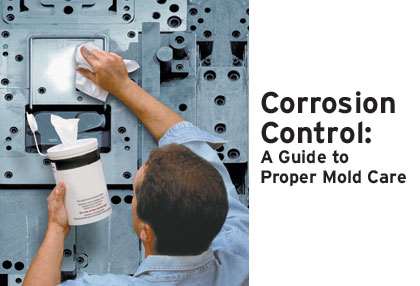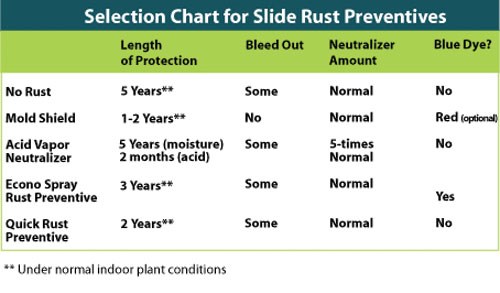Corrosion Control: A Guide to Proper Mold Care
If you have not set up a proactive mold maintenance program, your facility runs efficiently only until the next major problem or repair.
U.S. industry spends hundreds of billions a year in costs related to, or caused from, corrosion. In the plastic’s industry, these costs are not limited to mold damage and repair. Corrosion also causes the breakdown/shutdown of a press, leading to manufacturing downtime and significant loss of productivity.
A number of factors dictate how you will prepare for proper corrosion control. For example, plastic materials with fillers are especially abrasive and will wash away the mold steel after thousands of cycles. Plastic with high-melt temperatures exposes the mold to more heat and causes more wear than plastic with low melt points. Some materials give off excessive residues or corrosive vapors that leads to more cleaning and corrosion prevention.
Featured Content
Molds with intricate mechanisms are too often forgotten and generally require extra attention. Corrosion is also a concern for the mold presses, slides, lifters, moving cores, and hydraulic and mechanical systems. This is especially true with the presence of corrosive vapors from PVC molding as well as many other materials.
Although the interior of a mold surface is the most critical for protection, do not forget the sprue bushing. A rusted sprue bushing prohibits a good seal with the barrel nozzle. Corrosion of the bases where they clamp against the platens may cause problems with keeping the mold halves parallel. This can result in flash or excessive clamp pressure being required.
The type of products used and correct application methods can prevent bleed out of solvents and anti-rust compounds when a mold is put into production. At its worst, bleed out can result in marking parts with oil/grease/antirust material for hours during the start of molding. If the mold protectant does not mold off properly, a solvent cleaner is typically used to remove it. During this removal process, some solvent usually penetrates back past the ejector pins and contaminates the lubricant in the pin box. This results in thinning of the ejector pin lubricant, which then oozes out past the pins, marking the molded parts.
The right mold shield and rust preventive can provide about a year of protection while the mold is in storage. And most importantly, they will not need to be cleaned off prior to start up since they flash off during start up. This eliminates all risk of normal bleed out problems.
Some rust preventives are ideal for long-term storage (3 to 5 years), but may require cleaning to remove them from the mold prior to production. Rust preventives should be formulated with neutralizers to resist attack from fingerprint acids. Some also have a light blue dye so it is easier to see coverage.
Those who mold PVC and other fire retardant resins have to contend with the acid vapor given off during molding. An acid vapor neutralizer is made especially tough to prevent corrosion caused by the vapor from those resins.
Keep in mind that proper mold maintenance requires daily attention to cleaning the mold at the end of every day. Flush it clean with a good solvent cleaner and degreaser and apply a rust preventive to ensure that the next time you start up your mold, it is producing as it did the day before.
RELATED CONTENT
-
From CAM, Cutters and Cooling to Corrosion, Cleaning and Control
A review of the year’s top tips on technologies and strategies to improve moldmaking operations from design to first shot.
-
8 Ways to Increase Mold Life
A checklist of molding machine settings and preventative maintenance actions that improve mold longevity.
-
Detecting Water Flow Restrictions
A look at how taking the time and data to analyze a mold problem will help you repair it right—and permanently—the first time.














